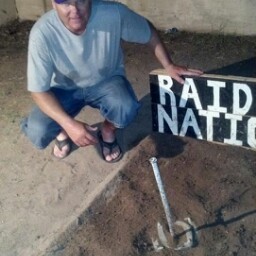Kenneth E Schultz
age ~89
from Dallas, GA
- Also known as:
-
- Ken E Schultz
Kenneth Schultz Phones & Addresses
- Dallas, GA
- Port Washington, WI
- Saukville, WI
- Adams, WI
- Dyer, IN
- Belgium, WI
Work
-
Company:Virtualpremise, inc.
-
Address:1900 Emery St Nw Ste 300, Atlanta, GA 30318
-
Phones:4042671781
-
Position:Executive vice president of lead technology operations
-
Industries:Computer Programming Services
Lawyers & Attorneys

Kenneth Schultz - Lawyer
view sourceSpecialties:
Marriage & Prenuptials
Marriage & Prenuptials
Commercial Litigation
Housing Law
Family Law
Marriage & Prenuptials
Commercial Litigation
Housing Law
Family Law
ISLN:
915616471
Admitted:
2001
University:
University of Rochester, B.A., 1995
Law School:
Washington University, J.D., 2001

Kenneth Schultz - Lawyer
view sourceOffice:
Duane Morris LLP
Specialties:
Immigration and Nationality Law
Mergers & Acquisitions
Mergers & Acquisitions
ISLN:
903928753
Admitted:
1977
University:
University of Michigan, B.A., 1970
Law School:
Albany Law School of Union University, J.D., 1976

Kenneth Schultz - Lawyer
view sourceSpecialties:
Insurance
Litigation
Environmental and Natural Resources
Litigation
Environmental and Natural Resources
ISLN:
920532629
Admitted:
2003
University:
Cornell University, B.S., 1999
Law School:
New York University School of Law, J.D., 2002
Isbn (Books And Publications)



The Democratic Advantage: The Institutional Sources of State Power in International Competition
view sourceAuthor
Kenneth A. Schultz
ISBN #
0817957227
Name / Title
Company / Classification
Phones & Addresses
Executive Vice President Of Lead Technology Operations
Virtualpremise, Inc.
Computer Programming Services
Computer Programming Services
1900 Emery St Nw Ste 300, Atlanta, GA 30318
President
Schultz Kenneth D - State Farm Insurance
Insurance Agents, Brokers, and Service
Insurance Agents, Brokers, and Service
10335 W Oklahoma Avenue #104, Milwaukee, WI 53227
Principal
Kens Services
Services-Misc · Contractors · Woodworking · Ceiling Fans · Concrete Repair · Doors · Electrician · Furniture Repair
Services-Misc · Contractors · Woodworking · Ceiling Fans · Concrete Repair · Doors · Electrician · Furniture Repair
2219 S 69 St, Milwaukee, WI 53219
4143277720
4143277720
Secretary, President
Community Supports, Inc
Intermediate Care Facility
Intermediate Care Facility
Chairman, Vice President
Doctors & Surgeons National Risk Retention Group, Inc
605 E 1 St, Rome, GA 30161
3370 Sugarloaf Pkwy, Lawrenceville, GA 30044
231 Scott St, Covington, KY 41011
3370 Sugarloaf Pkwy, Lawrenceville, GA 30044
231 Scott St, Covington, KY 41011
Executive Vice President Of Lead Technology Operations
Virtualpremise, Inc.
1900 Emery St NW STE 300, Atlanta, GA 30318
4042671781, 6784419900
4042671781, 6784419900
Executive Vice-President
Virtual Premise, Inc
Custom Computer Programing · Data Processing & Related Svcs
Custom Computer Programing · Data Processing & Related Svcs
1900 Emery St NW, Atlanta, GA 30318
3438 Peachtree Rd NE, Atlanta, GA 30326
4042671781, 6784419904
3438 Peachtree Rd NE, Atlanta, GA 30326
4042671781, 6784419904
STUDIO BUILDING REALTY, L.L.P
Us Patents
-
Picnic Cooler
view source -
US Patent:D604994, Dec 1, 2009
-
Filed:Jan 8, 2008
-
Appl. No.:29/294364
-
Inventors:Roy E. Greenlees - Forest Park IL, US
Kenneth S. Schultz - Forest Park IL, US -
International Classification:0701
-
US Classification:D 7605
-
Captive Tooless Fastener For Securing An Engine Intake Air Filter And Clamp Assembly For Air Filter Housing
view source -
US Patent:7981189, Jul 19, 2011
-
Filed:Aug 29, 2005
-
Appl. No.:11/214691
-
Inventors:Ronald Troxell - Clarendon Hills IL, US
Roy E. Greenlees - Lake Forest IL, US
Kenneth S. Schultz - Evanston IL, US -
Assignee:Greenlees Filter LLC - Forest Park IL
-
International Classification:B01D 46/00
-
US Classification:55529, 55498, 55DIG 28, 123 4165, 123198 E, 292 15, 292253, 2923366, 292359, 411 81, 411352, 411353, 411427, 411435, 411970
-
Abstract:The invention has a captive tooless fastener for securing the engine intake air filter. The tooless fastener comprises shaft and associated bodies. The body has two arms oriented about 180 degrees apart. The shaft is threaded through a sealing washer and an aperture in a closed end cap of the air filter. The shaft is expanded so it cannot be removed from the end cap. The body's threaded inner diameter mates with a threaded portion of a central shaft in an air filter housing. The body's arms are rotated to screw the fastener and the shaft of the housing together. When tightened, the sealing washer closes the aperture. To remove the air filter, the fastener is unscrewed from the shaft of the housing and in the shaft floats in the aperture. A person in the field can remove the air filter by inserting fingers under the arms and pulling.
-
Air Filter For Vehicle Motor
view source -
US Patent:D652497, Jan 17, 2012
-
Filed:Apr 30, 2010
-
Appl. No.:29/349778
-
Inventors:Ronald C. Troxell - Clarendon Hills IL, US
Kenneth S. Schultz - Evanston IL, US
Roy E. Greenlees - Lake Forest IL, US
Edward J. Sroka - Waconda IL, US
Colin W. Greenlees - Chicago IL, US -
Assignee:R2C Performance Products, LLC. - Forest Park IL
-
International Classification:2304
-
US Classification:D23365
-
Captive Toolees Fastener For Securing An Engine Intake Air Filter And Clamp Assembly For Air Filter Housing
view source -
US Patent:8323370, Dec 4, 2012
-
Filed:Jun 15, 2011
-
Appl. No.:13/161392
-
Inventors:Ronald C. Troxell - Clarendon Hills IL, US
Roy E. Greenlees - Lake Forest IL, US
Kenneth S. Schultz - Evanston IL, US -
Assignee:Maradyne Corporation - Cleveland OH
-
International Classification:B01D 46/00
-
US Classification:55498, 55492, 55495, 55496, 55DIG 28
-
Abstract:The invention has a captive tooless fastener for securing the engine intake air filter. The tooless fastener comprises shaft and associated bodies. The body has two arms oriented about 180 degrees apart. The shaft is threaded through a sealing washer and an aperture in a closed end cap of the air filter. The shaft is expanded so it cannot be removed from the end cap. The body's threaded inner diameter mates with a threaded portion of a central shaft in an air filter housing. The body's arms are rotated to screw the fastener and the shaft of the housing together. When tightened, the sealing washer closes the aperture. To remove the air filter, the fastener is unscrewed from the shaft of the housing and in the shaft floats in the aperture. A person in the field can remove the air filter by inserting fingers under the arms and pulling.
-
Direct Support Frog Assembly
view source -
US Patent:56534086, Aug 5, 1997
-
Filed:Apr 18, 1996
-
Appl. No.:8/635876
-
Inventors:Stephen R. Kuhn - Richton Park IL
Ronald Lee Lancaster - Manitou Springs CO
Ted A. Rittenhouse - Frankton IN
Kenneth L. Schultz - Orland Park IL
Keith Young - Naperville IL -
Assignee:ABC Rail Products Corporation - Chicago IL
-
International Classification:E01B 700
-
US Classification:246470
-
Abstract:A direct support type of rigid railbound railroad trackwork frog assembly is provided with a core frog casting, a pair of compliant, non-metallic spacer elements contacting laterally opposed sides of the core frog casting, a pair of wing rails respectively contacting the compliant, non-metallic spacer elements, and a threaded bolt and nut fastener joining the casting, spacer elements, and wing rails into a rigid unitary structure.
-
Remotely-Operated Self-Contained Electronic Lock Security System Assembly
view source -
US Patent:59330864, Aug 3, 1999
-
Filed:Dec 1, 1997
-
Appl. No.:8/980727
-
Inventors:Andrew Tischendorf - Milwaukee WI
Kenneth Schultz - North Prairie WI
Gary Lehman - Brookfield WI
Demos Andreou - Tucson AZ
Ari Glezer - Tucson AZ -
Assignee:Schlage Lock Company - San Francisco CA
-
International Classification:H04Q 100
-
US Classification:34082531
-
Abstract:A keyless locking mechanism for use in a door or the like. An operator activates the system by means of a portable remote handheld controller or a remote keypad unit, which transmit coded signals to an electronically controlled, electromechanical door lock device. The electronic and electromechanical device components are configured for secure mounting within the void or hollow portions of existing door locking apparatus, such as within the hollow interior doorknob, or hollow cylindrical sleeve latch actuators, or beneath the interior rose or escutcheon plates. A sensor or receiver/antenna mounted within the outer doorknob receives and forwards the coded signals to a processor which compares them with a predetermined stored signal. If an acceptable comparison is made, the processor generates control signals for the electromechanical device, which acts solely along or about the locking axis to enable or disable the door locking assembly, according to the command initiated by the operator. When locked, the outer doorknob turns freely.
-
Remotely-Operated Self-Contained Electronic Lock Security System Assembly
view source -
US Patent:62977253, Oct 2, 2001
-
Filed:Jun 21, 1999
-
Appl. No.:9/337423
-
Inventors:Andrew Tischendorf - Milwaukee WI
Kenneth Schultz - North Prairie WI
Gary Lehman - Brookfield WI
Demos Andreou - Tucson AZ
Ari Glezer - Tucson AZ -
Assignee:Schlage Lock Company - San Francisco CA
-
International Classification:H04Q 100
-
US Classification:340 564
-
Abstract:A keyless locking mechanism is activated by a remote unit which transmits coded signals to an electromechanical door lock device. The electromechanical device components are configured for secure mounting within the void or hollow portions of existing door locking apparatus. A sensor in the outer doorknob receives and forwards the coded signals to a processor which compares them with a predetermined stored signal. If an acceptable comparison is made, the processor generates control signals for the device, which acts solely along the locking axis to enable or disable the door locking assembly. The coded signals include two separate signals which are transmitted in segments interleaved with one another. The first signal includes an entrance code, while the second signal provides information concerning the frequency over which the next segments will be transmitted. The processor uses the second signal information to tune the receiver.
-
Rail Crossing Assembly
view source -
US Patent:57464006, May 5, 1998
-
Filed:Dec 3, 1996
-
Appl. No.:8/759958
-
Inventors:James A. Remington - St. Joseph MO
Kenneth L. Schultz - Orland Park IL
Russell R. Hein - Collierville TN -
Assignee:ABC Rail Products Corporation - Chicago IL
-
International Classification:E01B 700
-
US Classification:246465
-
Abstract:A railroad trackwork rail crossing having four rail intersection corners is comprised, at each corner, of four corner casting elements which have angled planforms, co-operating straight intermediate rail elements, co-operating straight guard rail elements, cooperating straight traffic rail elements, and bolt fasteners joining the casting and rail elements into a rigid unitary rail crossing structure.
License Records
Kenneth Schultz
License #:
70109243 - Active
Category:
EMS Licensing
Issued Date:
Jan 9, 2017
Expiration Date:
Jun 30, 2018
Type:
EMT-Basic
Resumes

Kenneth Schultz
view source
Kenneth Schultz
view source
Business Owner
view sourceWork:
Honor Coffee Roasters
Business Owner
Business Owner

Kenneth Schultz
view sourceMedicine Doctors

Kenneth Albert Schultz
view sourceSpecialties:
Emergency Medicine
Family Medicine
Family Medicine
Education:
Texas Tech University(1999)

Kenneth Elliott Schultz
view sourceSpecialties:
Emergency Medicine
Education:
State University of New York Downstate (1971)

Kenneth Elliott Schultz
view sourceSpecialties:
Internal Medicine
Emergency Medicine
Emergency Medicine
Education:
State University of New York Downstate (1971)
Plaxo

Kenneth E. Schultz MD (ks...
view source3311 7th St. Circle W., Palmetto, FL 34221

Kenneth Schultz
view sourceSatterlee Stephens Burke Burke

Kenneth Schultz Topp
view sourceSakskoebing, Denmark
Classmates

Kenneth Schultz
view sourceSchools:
Spooner High School Spooner WI 1947-1951
Community:
Beverly Poulin, Mary Pettit, Shari Farmer

Kenneth Schultz
view sourceSchools:
Heritage Academy Metairie LA 1993-1997
Community:
Sharon Godfrey, Cheryl Breck, M Peterson, Kim Gaudet

Kenneth Schultz
view sourceSchools:
Heritage Academy Metairie LA 1995-1997
Community:
Sharon Godfrey, Cheryl Breck, M Peterson, Kim Gaudet

Kenneth Schultz
view sourceSchools:
Sharp Park Elementary School Pacifica CA 1976-1980
Community:
William Shook, Lynn Bendick, Michael Marty

Kenneth Schultz
view sourceSchools:
Wootton High School Rockville MD 1972-1976
Community:
Wayne Eisenberg

Kenneth Schultz
view sourceSchools:
Elmwood High School Elmwood IL 1999-2003
Community:
Jack Forney, Phillip Cunningham, Mark Moats, Sandra Pillman

Kenneth Schultz
view sourceSchools:
Salem High School Salem NJ 1984-1988
Community:
Darby Preston, Eric Burton, Helen Raine, Lissa Smerigan, Kelly Jacobs, Sherrie Krycicki

Kenneth Schultz
view sourceSchools:
Saint Eugenes School Santa Rosa CA 1962-1966
Community:
Mary Coyle, Robert Smith, Cathy Hamman, Bob Gannon, Kathy Blatt

Kenneth Schultz
view source
Kenneth Schultz
view source
Kenneth Schultz
view source
Kenneth Schultz Jr.
view source
Kenneth Beverly Schultz
view source
Kenneth Schultz
view source
Kenneth M Schultz
view source
Kenneth Schultz
view sourceGoogleplus

Kenneth Schultz
Work:
EasyDSLR.com - Photographer and Owner
Education:
University of Queensland - Zoology
Tagline:
Family man and Photographer
Bragging Rights:
Created EasyDSLR Digital Photography Course

Kenneth Schultz
Lived:
Chicago , IL
Education:
Norman Hs, Norman, OK, Bentley College
Tagline:
A web marketer who loves to have business with you.

Kenneth Schultz

Kenneth Schultz

Kenneth Schultz

Kenneth Schultz

Kenneth Schultz

Kenneth Schultz
Work:
Benchmark Co - Institutional Sales Trader
Youtube
Myspace
Flickr
Get Report for Kenneth E Schultz from Dallas, GA, age ~89













